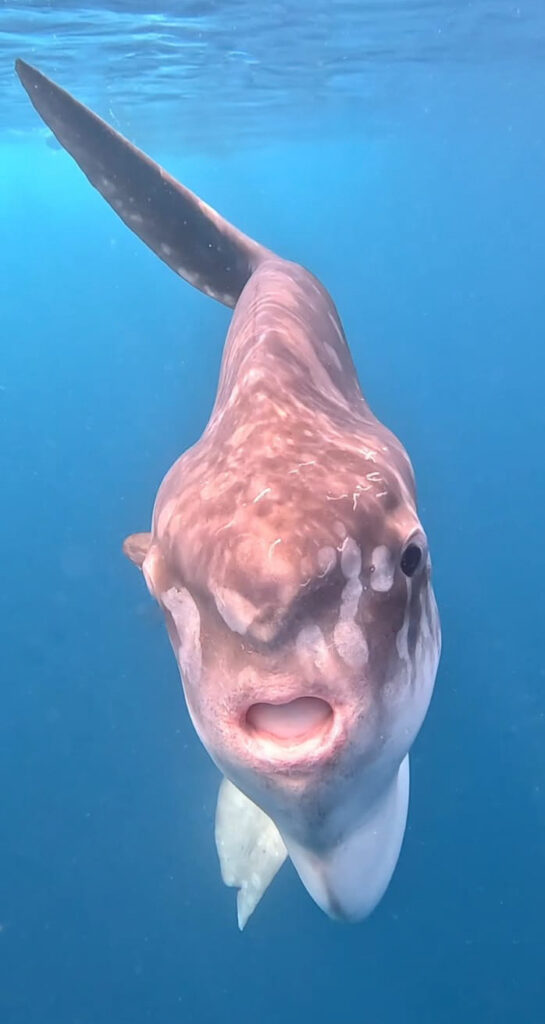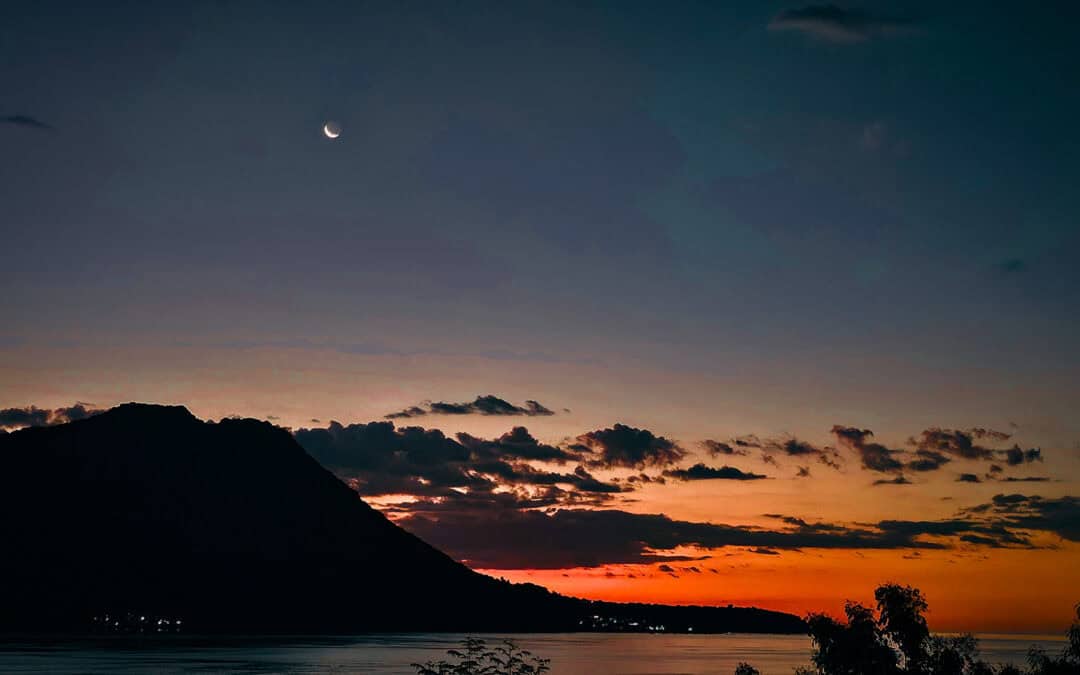When planning your scuba diving trips, factors like season, weather, water temperature, and anticipated marine life are typically on your checklist. But have you ever thought about checking the moon phase for your travel dates? It’s worth noting that the lunar phases have a significant impact on ocean currents, which in turn influence dive conditions and marine life encounters.
In this article, we’ll explain the connection between moon phases and ocean currents to help you better plan your next diving trip.
Let’s start by exploring the concept of moon phases:
As the moon orbits Earth, it goes through eight phases. Did you know that “moonlight” is actually sunlight reflecting off the moon’s surface, not light emitted by the moon itself?
Here are the eight phases of the moon:
🌑 New Moon: This marks the beginning of the lunar cycle, where the moon is positioned between Earth and the Sun, with the sunlit side facing away from Earth. At this stage, the moon is invisible from our perspective as there is no light reflecting off its surface.
🌒 Waxing Crescent: During this phase, we see a thin slice of light on the right side of the moon. As the nights pass, this thin sliver gradually enlarges until the next phase.
🌓 First Quarter: Half of the moon becomes visible during the first quarter, signifying the completion of its first quarter orbit around Earth.
🌔 Waxing Gibbous: Following the first quarter, more than half of the moon becomes visible as it continues its orbit around the Earth.
🌕 Full Moon: During this phase, the entire moon is visible with Earth positioned between the sun and the moon, allowing the sun’s light to fully illuminate its surface.
🌖 Waning Gibbous: After the full moon, we begin to see less of the moon’s surface as it enters the waning gibbous phase.
🌗 Third Quarter: Similar to the first quarter, during the third quarter, half of the moon is visible, but on the opposite side.
🌘 Waning Crescent: During this phase, we see a thin slice of light on the left side of the moon. As the nights pass, this thin sliver gradually diminishes until the cycle begins a new rotation with a new moon.
Next, let’s understand more about tides:
While waves are responsible for the ocean’s movement, tides dictate the rhythm of the sea, causing its waters to rise and fall twice a day. But what drives these tidal fluctuations? The primary force behind tides is the moon.
Both the moon and the Earth exert gravitational forces, pulling objects toward their centers. Despite the moon’s smaller size, the moon’s proximity to Earth allows its gravitational pull to tug at our planet’s water, creating a gravitational imbalance known as the tidal force. This gravitational attraction causes the ocean’s water to bulge toward the moon, resulting in high tides on the side of Earth facing the moon and on the side opposite the moon. High tide occurs in most places, twice a day, with roughly a twelve hour interval between.
While the moon mostly affects tides, the sun also contributes to the tides. When the moon and sun align with Earth, their combined gravitational forces intensify, leading to higher tides known as spring tides. Spring tides typically occur during the first and last quarters of the moon’s phases. When the moon is halfway between full and new, we see weaker tides called neap tides.
Tides moving the ocean’s water create currents, vary depending on your diving location. Some areas, like Bonaire, are characterized by gentle currents, providing a relaxed diving experience. In contrast, destinations such as Alor, Indonesia, experience stronger currents, adding an exhilarating dimension to dives. Various factors, including temperature, salinity, wind patterns, geographical features, and the tidal cycle itself, contribute to the intensity of currents in different locations.

Above: Graph Comparison of New Moon and Half Moon Phases in Alor, Indonesia
Let’s review the tide chart above for Alor, Indonesia, to get a better understanding. If you look at the chart, you’ll notice that during the new moon, the difference between the highest and lowest tides is bigger compared to when it’s half moon. During the new moon, the highest tide is 2.1 meters, and the lowest is 0.61 meters, making a difference of 1.49 meters. During the half moon, the highest tide is 1.67 meters, and the lowest is 1.17 meters, making a difference of 0.5 meters. When the difference between high and low tides is bigger, it means more water is moving back and forth, creating stronger currents.
Now that you understand how moon phases and currents work, you can make smarter choices when planning your next scuba diving adventure. It all depends on your diving style. If you love excitement, enjoy diving in currents, and want to see big marine creatures, consider booking your trip around the new moon or full moon for thrilling experiences. But if you prefer calm and peaceful dives, it’s best to plan your trip during the half moon.

Ocean sunfish, also known as Mola Mola, are frequently sighted near the surface around the full and new moon, coinciding with upwellings of cold water from the deep sea
Knowing how tides and currents are connected is crucial for divers. It helps you prepare for and navigate underwater environments more effectively. Whether you’re exploring quiet waters or diving into strong currents, understanding this relationship allows divers to appreciate the fascinating interactions between celestial forces and the underwater world.
Thinking about embarking on a scuba diving adventure to Alor, Indonesia, but need some help deciding the best time? Don’t hesitate to reach out to us. At Alor Tanapi Dive Resort, we do our best to guide you and tailor a trip that perfectly suits your desires and abilities.

